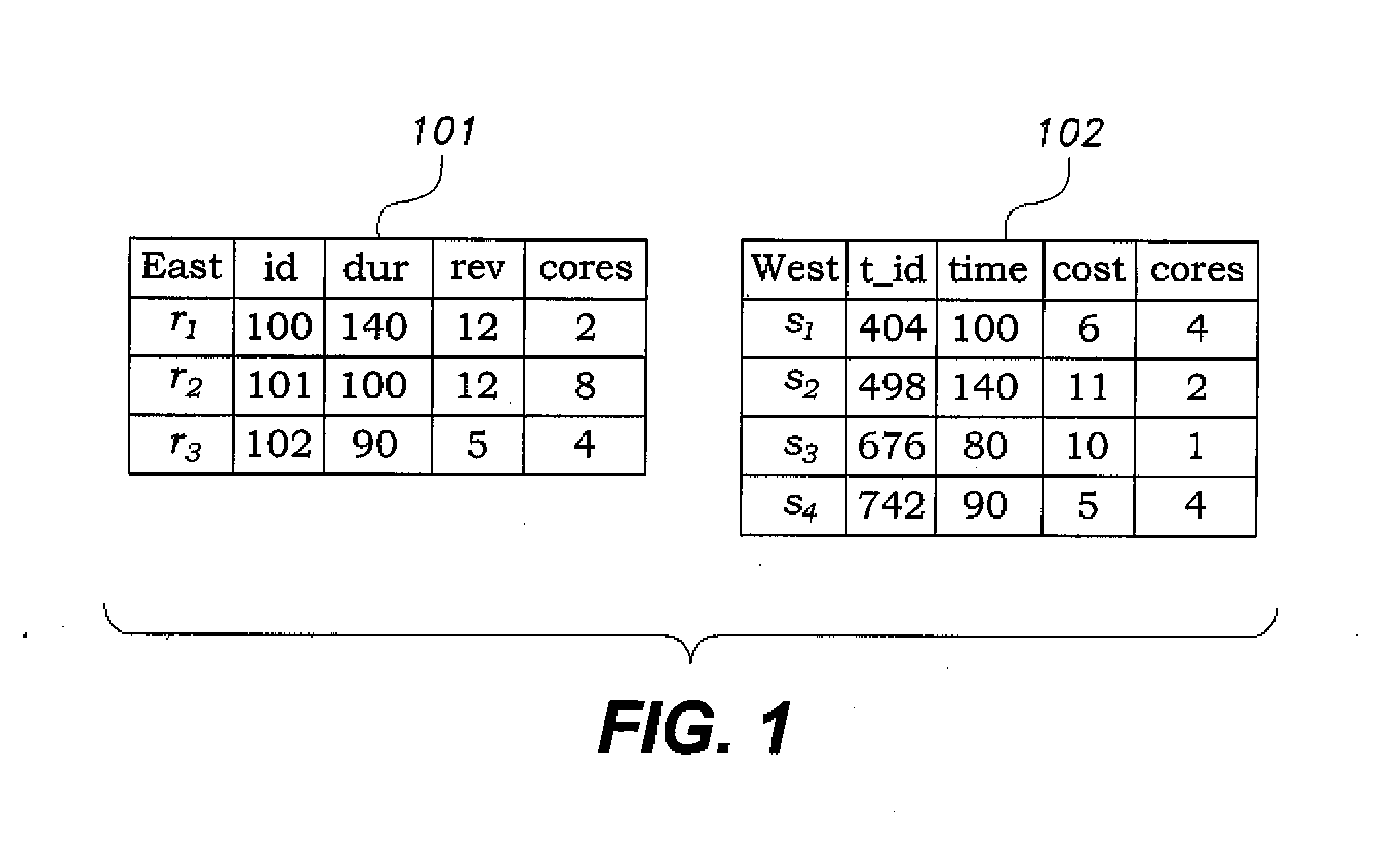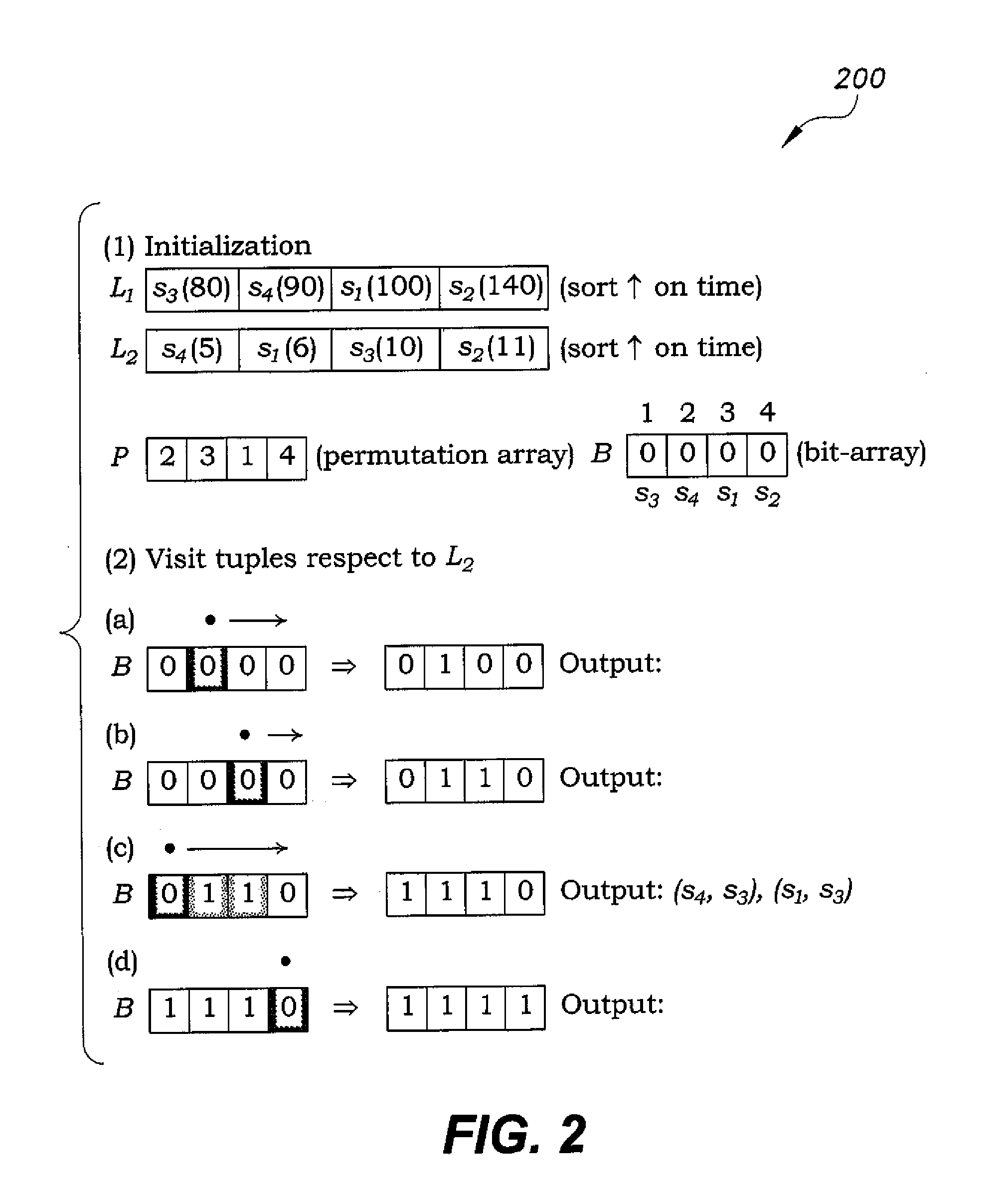Optimized inequality join method
a technology of inequality and join method, applied in the field of relational database optimization methods, can solve the problems of large database table size, high cost of processing table in computer resources, and difficulty in achieving the effect of reducing the number of tables
- Summary
- Abstract
- Description
- Claims
- Application Information
AI Technical Summary
Benefits of technology
Problems solved by technology
Method used
Image
Examples
Embodiment Construction
[0031]At the outset, it should be understood by one of ordinary skill in the art that embodiments of the present method can comprise software or firmware code executing on a computer, a microcontroller, a microprocessor, or a DSP processor, state machines implemented in application specific or programmable logic; or numerous other forms without departing from the spirit and scope of the present method.
[0032]The optimized inequality join method uses permutation arrays to store positional information for sorted attribute values. Moreover, in contrast to sort-merge join, space efficient bit-arrays are used in algorithms that enable optimizations, such as Bloom filter indices, for fast computation of the join results. As examples, a centralized version of these algorithms is developed on top of PostgreSQL, and a distributed version on top of Spark SQL.
[0033]FIG. 1 shows tables of an exemplary relational database to query, (table east 101 and table west 102). Consider the west table 102 ...
PUM
 Login to View More
Login to View More Abstract
Description
Claims
Application Information
 Login to View More
Login to View More - R&D
- Intellectual Property
- Life Sciences
- Materials
- Tech Scout
- Unparalleled Data Quality
- Higher Quality Content
- 60% Fewer Hallucinations
Browse by: Latest US Patents, China's latest patents, Technical Efficacy Thesaurus, Application Domain, Technology Topic, Popular Technical Reports.
© 2025 PatSnap. All rights reserved.Legal|Privacy policy|Modern Slavery Act Transparency Statement|Sitemap|About US| Contact US: help@patsnap.com



